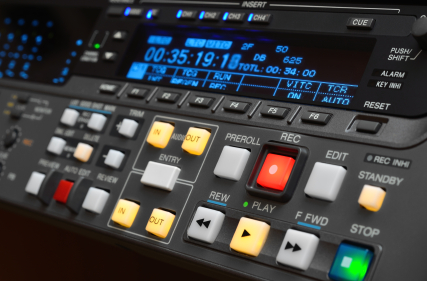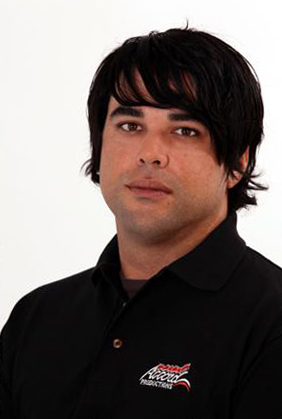< Back to all posts
Q&A With Professional Video Editor Michael Ball
I attended Boston University’s MFA film program and first learned how to edit on the Avid. I worked on film projects as a freelance editor for some time, but truly started my career in the video industry as a video production manager in Boston and NYC. Eventually, I moved into a producer position on the MTV show, “The X-Effect”, a series that was filming in Miami. While in Miami, I had the opportunity to jump on another MTV show and join the edit team for, “The Paper”. Since then, I have remained in the field of post production as the Post Production Manager and Lead Editor at Accord Productions located in Miami, FL.
When taking on a new project or client, what questions are you asking? What is the minimum amount of information you need to know to get started?
Every post production project is different and requires a different set of questions. You cannot approach each client or project with the same mindset, but once you get know the different levels of a post production project, you can start to formulate a set of basic questions. My first question is never the same, but list of questions are pretty much status quo.
- What format or format(s) of video will we be editing?
- Do you have graphics or photos that you would like to add the edit?
- Do have music, or will you require needle drops or custom cuts?
- Will you need motion graphics to add lower thirds, openings, or transitions to the edit?
- What is your final purpose for this video?
- Is it for web, broadcast, or a presentation?
- What is your deadline?
These are the questions that are necessary for the technical structuring and time scheduling of a post project, and ultimately lead into the secondary set of questions.
- What is your goal with this video?
- Who is your audience?
- How long is the video?
- Will you be supervising the edit, or would you like to work remotely, where I can upload versions of the video as we go for review?
These setup questions will allow you to get an idea of how to start the editing process and decide which members of your technical team need to be involved. A feature documentary will lead to a different set of questions when compared to a two minute social media video. The idea is to prepare yourself, and most importantly, prepare your client for the process prior to an edit session so the room is clear for creative process to begin.
Which editing platforms do you use, and why?

In our post production facility at Accord Productions, we are at the will of what producers, agencies, and clients request in regards to an edit system. We have Avid, Final Cut Pro, and Premiere systems in house. The editors at our facility are able to work on all three systems. What may be considered a pro or con of each system, I feel, ultimately, plays into the editor’s capability and knowledge of that software. Most of the choices will be based on the technology that surrounds you. If you are in a Grass Valley studio setup, Edius may be the tool you find yourself wielding.
In an ongoing tv show series with multiple camera crews and editors working on the same project at the same time, you may be on a Avid with Interplay and the Unity at your disposal. As a motion graphics artist you may find you need Premiere for some finishing touches on your project, and finally, as an independent and Apple enthusiast, you may have adopted Final Cut Pro as your system of choice. With a laundry list of third party developers, the inherent program’s functionality, and a successful workflow, you can make these systems do what you need in most any environment. Editing is a theory that is adopted and put into action by a tool. The tool does not make or break the editor.
If you had to describe codecs for people who know nothing about codecs how would you describe them? Which codecs do you use, and how does final output of video (where it is going to show) regulate your use of codecs?
I think of a codec as the wrapping paper on a present. The video is the present transported and handed off inside the wrapping paper. Some paper is nice and glossy, pretty and shiny, while others are like the front page of a newspaper. The 10-bit, 8-bit, ProRes, and DNxHD codecs are your high gloss paper, and something like a DV codec is closer to the newspaper; quite ugly and gets your hands dirty when you touch it. The other way to think about codecs, in a more technical aspect, is to ask the question, “what will you use this file for?”
Uploads to the web, social media sites, and mobile devices have a set of codecs and file formats that work best. If you are delivering a file for mastering to tape or for further editing, there is a set of codecs designed to keep your information in the highest quality. Production itself introduces a different way to look at codecs in relation to the camera you choose to film with and the set of parameters you hope to maintain while filming. When I am complete with an edit project, I choose a single file format and codec as my master mezzanine file. From this archived file in the Digital Asset Management system, I can set rules to encode any file format requested. With the Apple ProRes codec’s further integration with Avid and Premiere, we choose this family of codec for as a mezzanine file.
Can you describe the technology that you are utilizing?
Technology is not standardized, but your workflow must be. Whatever you choose to add within your post production facility must be able to “speak” to the other systems. We have a variety of video services at Accord, from editing to production to close captioning and web services. Each system in our facility can send files over our network to any other system. They are all interconnected and ready to work off the other. When we film, our media is ingested into the archive. This archive is accessible by all systems. The editor accesses the archive and transfers the media into the edit system. After the edit is complete a mezzanine files is added back into the archive for transcoding to the web, close captioning, mastering to tape, or any other service necessary. The machines that carry out these tasks are able to access the mezzanine file and be ready to start. The post facility is connected over a gigabit network, and the systems have access to our shared storage within that gigabit network or over a fibre channel. Select systems require large storage for one-off mastering jobs from files with an extremely high bitrate, such as dual-stream 4:4:4, native 2k, and 4k files. These systems utilize large local Raid storage integrated with a SAS connection and external controller. We have started to introduce the thunderbolt technology for our on location edit packages with the MacBook Pro and iMac systems. When editing, we rely on an external client monitor in all situations, whether on location or in a suite. The thunderbolt technology has opened up the portability of connecting HD external monitors when editing on location, and allow us to setup a full suite system in less than 10 minutes.
How do you organize your time and manage deadlines? Do your projects regulate the time, or does time regulate your project?

Time management is important when working in post production, and deadlines must be met. If you work smart, and have the resources available, you can use multiple systems within your day to double your efforts. When one machine is processing a request, the other machine is available for you to continue. If this option is not a possibility, on location for instance, then you need to plan your processes to be running at the same time on the same system, utilizing multiple programs, while you continue to edit. For example, I will not render media that does not match within a timeline, instead, I transcode the media in the background, with a separate program, to match my project and continue to move forward on the edit. At Accord Productions, we have processes running overnight, almost every night. There are 24 hours in a day, and if you work smart, 14 of those hours can be setup to help you meet your deadlines while you are not at the office.
What are some of the most commonly asked question from your clients? How do you answer?
How do I access this FTP thing? Answer, click the link in email we sent, it will direct you to a website, and then click download. WeTransfer.com , YouSendIt.com, and any other custom easy-to-use web based interface is priceless when delivering large files to your clients. A one click and download option far outweighs asking a client to access a bulky FTP folder site or asking them to use FTP transfer software. For large files among broadcast facilities and technicians, a protected transfer protocol process is preferred, but I try to keep this process invisible when sending a file to a client.
Do you have any advice for aspiring editors?
Learn the theory of editing, master the process of storytelling, pay close attention to everyday human emotion, and develop a keen eye for design. All of these elements are intertwined in every project I work on.
Take risks, and stand by your choice if it works. If it doesn’t work, be readily prepared to let it go and allow the collaborative process to flow.
Do not allow the tools to command your edit; you are the master and commander of the tools. This is your responsibility as a professional editor. If you are worried about not knowing how to do something, then the creative process will take a backseat to your inability to master your system.
Check out the Accord Production Center







Leave a Reply